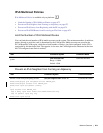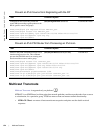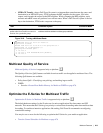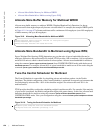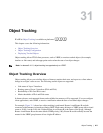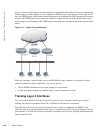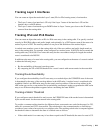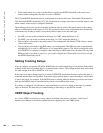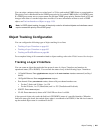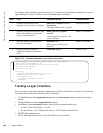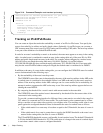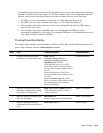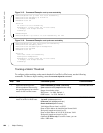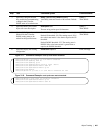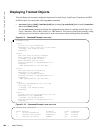
Object Tracking | 681
You can assign a unique priority-cost value from 1 to 254 to each tracked VRRP object or group interface.
The priority cost is subtracted from the VRRP group priority if a tracked VRRP object is in a DOWN state.
If a VRRP group router acts as owner-master, the run-time VRRP group priority remains fixed at 255 and
changes in the state of a tracked object have no effect. For more information on how to track a VRRP
object, see Track an Interface or Object on page 1139.
Object Tracking Configuration
You can configure the following types of object tracking for a client:
• Tracking a Layer 2 Interface on page 681
• Tracking a Layer 3 Interface on page 682
• Tracking an IPv4/IPv6 Route on page 684
For a complete listing of all commands related to object tracking, refer to the
FTOS Command Line Interface.
Tracking a Layer 2 Interface
You can create an object that tracks the line-protocol state of a Layer 2 interface and monitors its
operational status (UP or DOWN). You can track the status of any of the following Layer 2 interfaces:
• 1-Gigabit Ethernet: Enter
gigabitethernet slot/port in the track interface interface command (see Step 1
below).
• 10-Gigabit Ethernet: Enter
tengigabitethernet slot/port.
• Port channel: Enter
port-channel number, where valid port-channel numbers are:
• For the C-Series and S-Series, 1 to 128
• For the E-Series, 1 to 32 (EtherScale) and 1 to 255 (TeraScale and ExaScale)
• SONET: Enter
sonet slot/port.
• VLAN: Enter
vlan vlan-id, where valid VLAN IDs are from 1 to 4094.
A line-protocol object only tracks the link-level (UP/DOWN) status of a specified interface. When the
link-level status goes down, the tracked object status is considered to be DOWN; if the link-level status is
up, the tracked object status is considered to be UP.
Note: In VRRP object tracking, the sum of the priority costs for all tracked objects and interfaces cannot
equal or exceed the priority of the VRRP group.



